The idea of living in a concrete house doesn’t sound that appealing because of the material’s cold nature. Concrete is not soft or pleasant to the touch like wood which gives it a bad reputation in a sense.
But what we don’t take into consideration is the versatility, durability, and beauty of concrete. Architects and designers exploit the concrete characteristics with these dream concrete houses.
How to Build a Concrete House
You need precision and patience to build a concrete home. The whole process can take weeks or months to finish. The time it takes also depends on the type of concrete you use for your home.
There are many benefits to using concrete for your home, including energy efficiency, low maintenance, and durability. Concrete homes create a safe, comfortable enclosure while positively contributing to the environment.
There are two main types of concrete forms to choose from to build your house.
Concrete Blocks vs. Insulated Concrete Forms
These are the two standard wall systems used to build concrete houses. Both systems benefit the home. However, insulated concrete forms are quick to construct and already have insulation, whereas concrete blocks will need insulation. Thus, it makes the insulated concrete forms more preferable.
How to Build a Concrete House Step-by-Step
- First, excavate and prep the site.
- Form and reinforce the footing with instructions from the engineer.
- Place the concrete footing forms, Then finish and level the concrete to stack the ICF blocks.
- Begin to stack to block forms.
- Next, install the vertical alignment bracing to keep the walls straight and stable.
- Then, inspect all the bracing and reinforcements before adding concrete to the blocks.
- Pour the concrete into the blocks using a boom or line pump.
- Vibrate the wall with a mechanical vibrator to remove air pockets in the wall.
- Level the concrete with the block top and set the anchor bolts.
- Remove and clean the bracing.
How to Pour a Concrete Slab
Concrete slabs are multi-purpose for your home. You can use them for walkways, staircases, patios, and floors. Pouring your own concrete slab saves you money and is adaptive to many of your outdoor design ideas.
Use the following steps to pour your concrete slab:
- Choose a location to outline your slab. Then, use a tape measure and rope to outline the area and create perpendicular lines.
- Use a hammer to drive stakes into the ground at the corners of the slab.
- Next, you’ll need to remove the turf with a shovel or a turf-cutting tool.
- Then, you’ll lay the subbase with gravel. Pour it onto the construction site and tamp it to compact and flatten the gravel.
- Afterward, build and set the slab form with 2 x 4 pieces of wood screwed together and place it on the subbase.
- Coat the inside of the form with vegetable oil or a concrete release agent. Then wet the subbase with hose water.
- Mix the concrete in a wheelbarrow and pour it into the form. You can spread the concrete using a hoe.
- Next, you’ll screed the concrete using a 2 x 4 piece of wood, leveling and scraping off excess concrete.
- Finally, let the concrete cure for 48 hours. The concrete will be fully secure after 28 days.
How to Build a Concrete House Foundation
Building the foundation for a house is a job for professionals. It’s vital to ensure the right environment so the foundation stays where it’s supposed to be.
To build a concrete foundation, you need to:
- First, obtain any necessary permits to build the foundation.
- Layout the area for the foundation and mark the perimeter.
- Ensure there are no present underground utilities.
- Then, follow building and safety codes to dig out dirt for the footings and slab.
- Next, build the forms for the slab and footings and install the rebar.
- Then, pour the concrete footings.
- And finally, pour the concrete into the prepared location for the slab.
How Much Concrete Do I Need?
First, you need to determine the measurement of the space. Once you find the dimensions you need, you can use one of the several online concrete calculators.
If you’d instead do the math yourself, measure the length, width and height and multiply them together. Then divide the resulting number by 27 to find the cubic yards.
Low-Cost Concrete House
Affordable concrete homes have been gaining interest for several years. And this attention comes from homeowners seeking sustainability, resistance to natural disasters, energy conservation, and safety.
Affordable concrete homes are more cost-friendly because they are made with inexpensive materials including:
- Prefabricated panels
- Concrete sheets
- Stone cladding
- Insulated form concrete
- Precast concrete
Many methods and materials used for low-cost concrete houses are environmentally friendly, high-quality, safe, and offer low-impact construction.
How to Stain Concrete
The surface of your concrete floor can become worn and dull over time. To give the area a new sleek look, stain the concrete with a color that complements your home and will protect the integrity of the surface.
To stain concrete, you need to:
- First, choose a concrete stain that fits your needs.
- Then prepare the concrete surface by cleaning, removing dust, and sealing cracks.
- Apply the stain with a paint sprayer and completely free the concrete from residue.
- Finally, apply a finishing sealer to protect the stained concrete.
How to Clean Concrete
Even if you’re careful, spills and stains are bound to happen on your concrete. Thankfully, there’s a handful of ways to clean these stains to get your concrete looking fresh again.
- Soda – This might sound counter-productive, but soda has the main ingredients to remove tough grease stains.
- Detergent – For more minor grease spills, mix a little detergent with water and scrub with a sponge.
- Vinegar and baking soda – If you’re looking for a natural cleaner, this is a good option. Fill a spray bottle with equal parts vinegar and water. Pour baking soda onto the stained area, spray with the solution, and scrub with a sponge.
- Concrete cleaner or degreaser – These will loosen up oil for easy cleanup. But they won’t break down the oil. These work best on porous concrete.
- Bleach – Mix warm water with bleach for an effective mopping solution for your concrete floor.
Concrete House Plans
Architects and contractors use concrete to build homes all over the world. Besides being a familiar material, it’s durable and can withstand various weather conditions. You can creatively use concrete to create a diverse and sustainable home.
Konieczny’s Ark
Would a concrete house look out of place in a forest clearing? Well, yes and no. Look at Konieczny’s Ark, a project developed by KWK Promes in Krakow, Poland.
It’s a house-shaped by the site on which it stands. Given the remoteness of the location, security was an issue. So, the architects designed the house so that only one corner touches the ground while the rest of the building hangs over the hill’s edge.
This solution also reduced the landslide risk as rainwater flowed under the house. So, even if this concrete box doesn’t seem to blend in at first, it’s actually very well adapted to its location.
Anako Architecture Concrete House in Switzerland
The idea of living in a fortress can sound pretty awesome. You’d have plenty of privacy and security. But what would such a structure have to look like so it could more or less fit in a usual urban or rural setting? The answer is the house designed by Anako Architecture along the Rhone in Switzerland.
The project uses concrete as a primary material. And the house looks a lot like what would be a modern and stylized version of a fortress. It has an unusual form that mimics the Alps’ silhouettes visible in the distance. Walls of raw concrete define the facade. And they set a border between the interior spaces and the surroundings.
Modern Concrete House in Mexico City
But not all concrete houses look like compact boxes or fortresses. This house in Mexico City proves that a concrete home can also be open to the surroundings. This was a project by JJRR/Arquitectura.
The architects made sure that the house took full advantage of its location. And especially the views by elevating the building 1.3 meters above the ground. Full-height windows and a green roof terrace allow the house to blend in and open up to the vast outdoors.
Glass and Concrete House in Argentina
This house that tries to close itself off as much as possible in respect to the street and the neighbors. But this family home has surprisingly open spaces and facades. Moarqs + OTTOLENGHI blends concrete and glass to achieve this contrasting combination.
The design strategy was to have a more open ground floor and close the first floor making it private. Both floors have full-height glass walls. But the difference is that there’s a concrete shell that wraps around the upper floor. This frames the spaces and blocks the views while allowing them to be open to the courtyard.
The Jellyfish House
This is the Jellyfish House, built by Wiel Arets Architects in Málaga, Spain. It’s an attractive house for several reasons. First, it’s an inspiration for other projects because of the way it overcomes the neighbors blocking the sea view.
They designed the house on four levels with a rooftop pool that cantilevers nine meters to the South-West. They designed it this way so that you can admire the views of the sea while relaxing on the terrace or swimming in the pool, which, by the way, has a glass bottom.
The U Retreat in South Korea
You’d think that a concrete house wouldn’t have much in common with nature, but you’d be wrong. Just look at this gorgeous retreat in South Korea. IDMM architects designed the U Retreat on a steep site overlooking a cliff. The nature and surroundings had a lot to do with its unique design; the cliff formations and trees were inspirations for the forms and layouts of the concrete structure.
Concrete House for Trees
Concrete and greenery are an excellent combo. And what better way to show you this than with a project called House for Trees? It’s a series by Vo Trong Nghia Architects developed in Ho Chi Minh City.
The main idea behind the project was to reconnect the city and nature by bringing more greenery into the area. This is the Binh House, one of the structures in the series. It has several terraces that act as small gardens. And you can also see the vegetation made its way inside the house.
Concrete Block House in Mexico City
Making a house look natural in its setting like it grew on the plot is no easy task. Yet architect Tatiana Bilbao did a great job designing this family home in Mexico City. The project is a five-sided concrete block that naturally emerges from the hillside. There’s panoramic views towards Monterrey. Each block is strategically oriented to capture and frame different landscape parts.
Belgian Inspired Concrete House
When dealing with a lot of concrete, it’s often nice to balance out its coldness with some warm wood elements. Studios Clauwers & Simon achieved this when designing this house in Belgium. They structured the building around a courtyard.
And created it as a tribute to Belgian architect Juliann Lampens. She is known for the extensive use of concrete inside and outside of the buildings designed back in the 1960’s. The timber and the views of the large garden soften the impact of the concrete in this particular case.
Crystal Shaped Concrete Home
Sometimes we want our homes to blend in and to coordinate with its neighbors, but other times it’s nice to stand out. This three-story family home in Pliezhausen, close to Stuttgart, is one of those cases.
Steimle Architekten designed the house and gave it an unusual crystal-like shape. The angled concrete facades offer an unexpected advantage: beautiful views of the surroundings. It’s a design that opens the house to the outdoors in an unusual but significant way.
This house in Brissago, Switzerland looks simple, like a concrete monolith with cut out windows from place to place. It looks as if it’s been on that slope all along and only recently carved into a home. It’s a great look managed by Wespi de Meuron Romeo Architects. Because it sits on a steep slope, the houses have the top floor entrance and the parking lot up on the roof level. And the interior matches this look.
The City Villa in South Africa
The geometry of the City Villa is fascinating. It’s the defining feature of the design ARRCC created just for this project. This is a modern family home located in South Africa. Its design is a collection of rectangular volumes placed on top of each other.
Some of these volumes cantilever to the sides, forming terraces. A stone wall contrasts with the concrete, adding texture and diversity to the design. Other contrasting elements include the brass front door, which was custom-designed, and all the glass surfaces.
The Concrete House in The Forest
This forest house is in Mar Azul, Argentina. BAK Architects it on a site full of challenges. The owners wanted it to be away from the sea and populated areas and serve as a private, intimate and remote refuge. At the same time, they tried to connect with nature and the landscape.
The architects responded with a single-level design for a structure with a concrete shell and vast openings. It sits on a flat section of the site, and it offers uninterrupted views of the surrounding landscape.
The Dune House in Buenos Aires
This dune house is located near Buenos Aires and was built by Luciano Kruk Arquitectos. It’s a concrete structure designed to be a summer house and enjoyed during the warmer months.
Wood And Concrete House in Southern France
Another fascinating project on our list is a gorgeous concrete and wood house located in Southern France. Pascual Architecte studio designed it with large glass doors that open up the living spaces to the garden. And they provided a large circular skylight carved out into the terrace roof.
The skylight is an unexpected and unusual detail. It opens the outdoor spaces to views of the sky, and it lets more light into the kitchen, which is excellent, especially in the winter. What’s especially beautiful about this house is the concrete and the wood, two materials that complement each other.
Sci-fi Inspired Concrete Home
Located in Brazil, this beautiful house has an exciting design. The studio modeled it not after the surroundings, but after another place in a filming location for a sci-fi movie. Studio Costaveras Arquitetos used the location as a reference to come up with an original design.
Thus, this fantastic two-story concrete house with an organic connection to the outdoors. And it has a spacious, bright and inviting interior. It has its own home theater, and a beautiful balcony that frames a great view of the surroundings.
Spanish Concrete House with Neighboring Golf Course
The inspiration for this concrete house in Spain was the site itself, overlooking a golf course. Studio Eneseis Arquitectura came up with a design, making most of the view. And also overcame the challenges presented by the location.
The site is uneven and has neighboring plots on all sides except for the one facing the golf course. As such, this became the focal point of the entire construction. The house is a U-shaped layout, allowing it to maintain the neighboring structure’s privacy and remain open towards the view. The palette of materials used throughout the project emphasize the landscape and scenery.
Space and Architecture Concrete House in San Francisco
The owners chose a beautiful site in San Pancho, San Francisco, for the new home. The owners worked with RVO Studio to turn their vision into reality. They wanted a spacious, large house that felt like a holiday home and comfortable for long-term use.
The architects created a beautiful, three-level structure with two main areas. One was for everyday activities and the other for guests. They used concrete and bricks to give the exterior of the house a welcoming appearance.
CL76 House in Argentina
This is the CL76 House, a modern and beautiful lakeside home in Buenos Aires, Argentina. It’s the result of a collaboration of El Aleph Arquitectura and Fritz and Fritz Arquitectos.
These two studios came up with a design that suits their client’s style and requirements. The house has a simple exterior, looking almost unfinished due to the exposed concrete surfaces. Significant, full-height windows point towards the lake, seamlessly blending the indoor and outdoor. The ground floor has easy access to the garden, the pool, and the terrace that frames it.
The Razor House in La Jolla, California
You should always take advantage of a great view. And the Razor House offers stunning views as it sits on the edge of a cliff, overlooking the Pacific Ocean. Architect Wallace E. Cunningham built the Razor House in La Jolla, California, in 2007.
It has very sleek and sharp lines. And the side facing the ocean is glass, a vast panorama window providing a breathtaking view. The interior is spacious, modern, and inviting. And it features a two-story living area at the center with a curved staircase leading up to a lounge.
Concrete House FAQ
How Much Does a Concrete House Cost?
If you’re thinking about opting for a concrete house, it’s not a bad idea. Concrete homes are energy-efficient, and while they might cost more upfront, they will save you 20 to 30 percent on heating and cooling.
If your home is around 2,000 square feet, you’re looking to spend anywhere between $200,000 and $400,000 for concrete. But the price greatly depends on your location, the cost of concrete, and the size of your home. So you could pay more or less due to these factors.
Are Concrete Houses Cheaper?
Concrete homes will save you money on your energy bills and are more durable over time than conventional homes. They are more disaster-resistant, insect-resistant, and mold resistant. However, they are typically more expensive to build than conventional homes.
What is a 3D Printed Concrete House?
A 3D printed house is printing materials for homes using a massive, industrial-size 3D printer. These printers are able to extrude concrete, plastic, hemp fibers, and more. These printers have specialized nozzles that can move in multiple planes and are very robust and hard to operate outdoors on various terrain.
Can You Raise a House on a Concrete Slab?
Yes, you can raise a house on a concrete slab. There are two main routes for raising a house on a slab. If you’re building a home from scratch, you don’t have to worry about disassembling your utilities and household items. You’ll need to securely build the walls, attach the roof, and then add the utilities.
However, if your home is already intact and you decided to reconstruct your house with concrete, this can be more work. You’ll need to hire professionals to disconnect the plumbing, water, and utilities. And you’ll need to remove all cabinetry from the walls and more just to begin the concrete construction process.
How Much is a Yard of Concrete?
In terms of measurement, one yard of concrete covers about 3 feet. And to do the math, figure out how many feet you need covered and multiply it by three.
In terms of cost, if you want one yard of concrete, you can expect to pay around $125 per yard. And per square foot, you can expect to pay $4 to $6.
How Long Does it Take For Concrete to Dry?
It only takes two to three days for concrete to dry. However, drying concrete is a continuous event, and it can take up to 28 days to reach its full adequate strength.
Concrete House For The Win
Concrete is a smart construction material that is versatile, durable, and energy-efficient for any design. It can withstand weather, mold, bugs and save you money on your energy bills. You won’t lose if you use this low-maintenance material for your home.
The post 20 Gorgeous Concrete Houses With Unexpected Designs appeared first on Home Decorating Trends - Homedit.


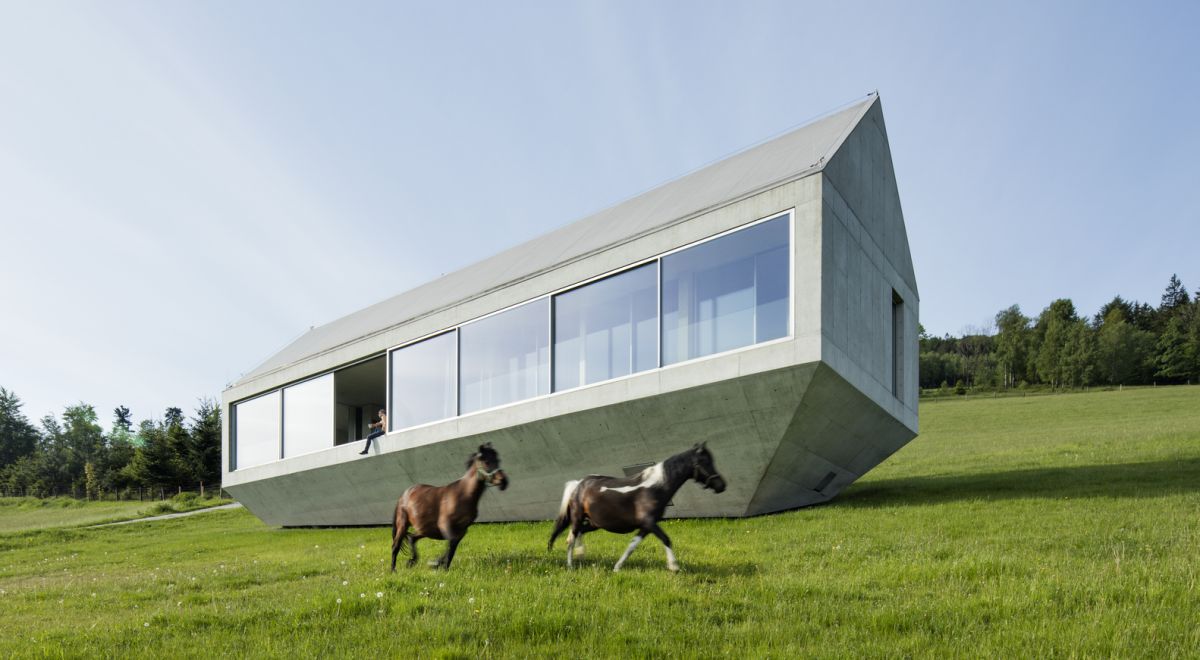

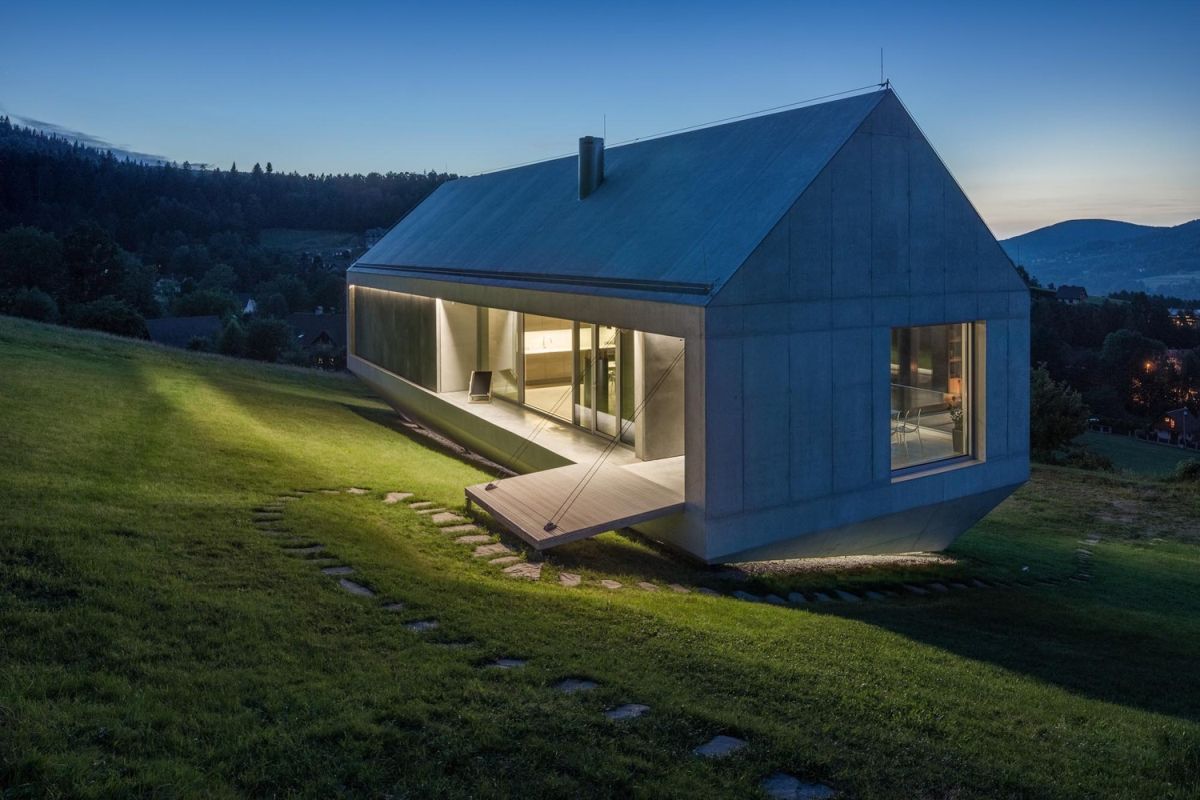
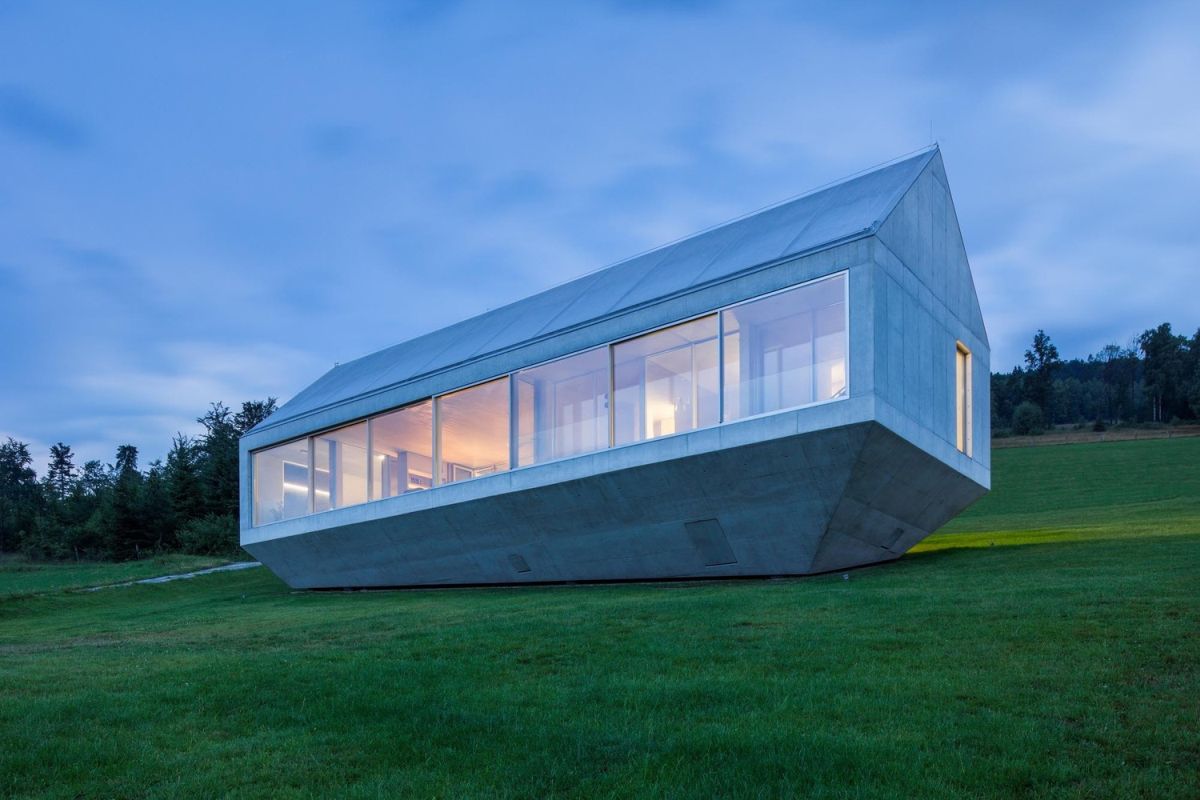
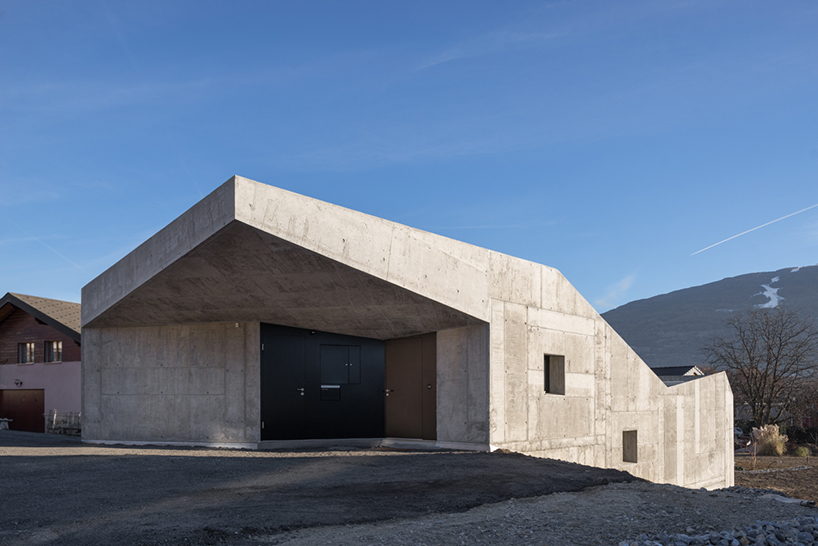




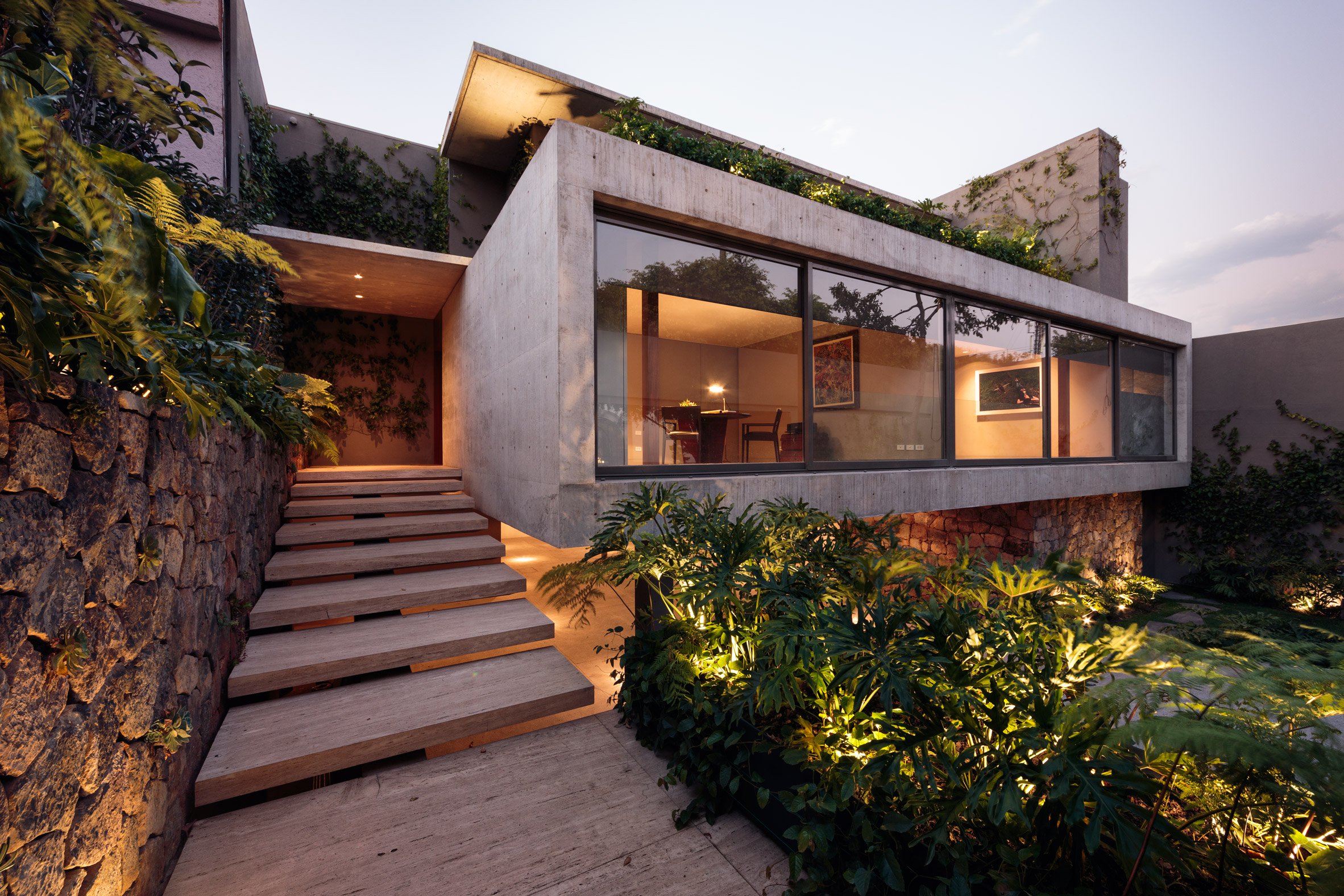





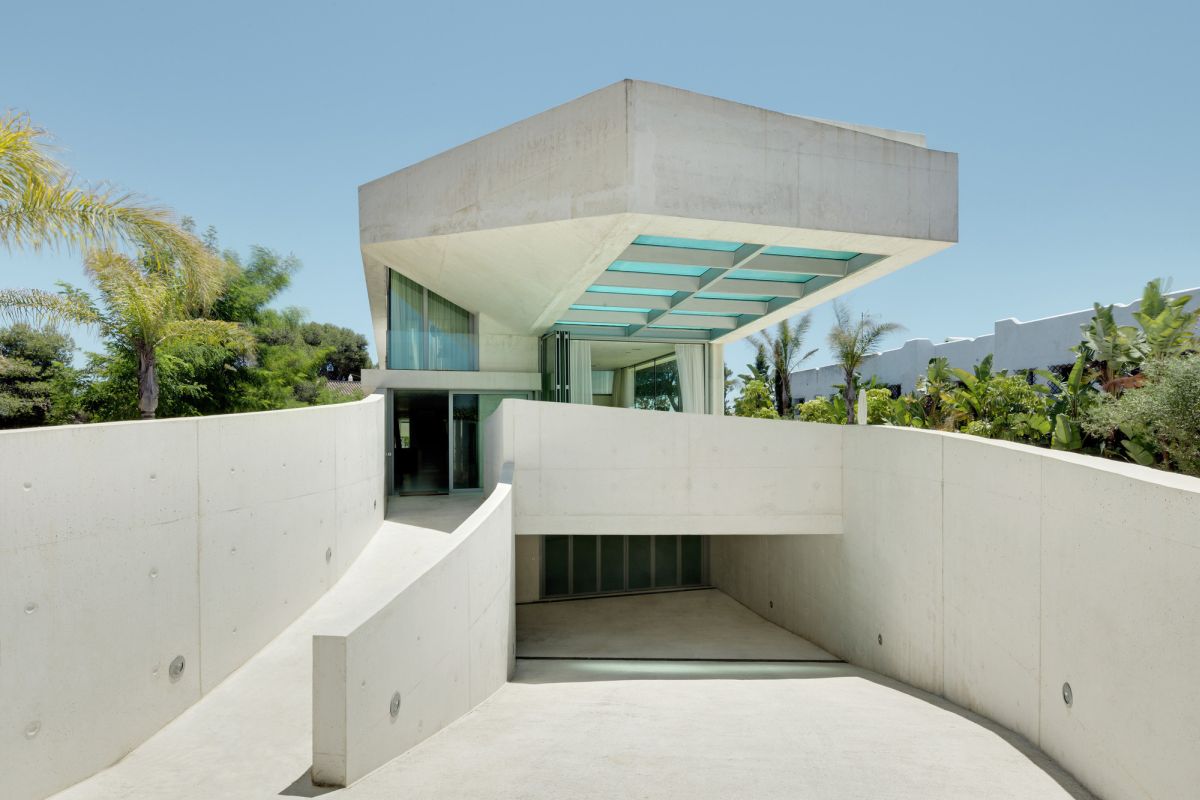








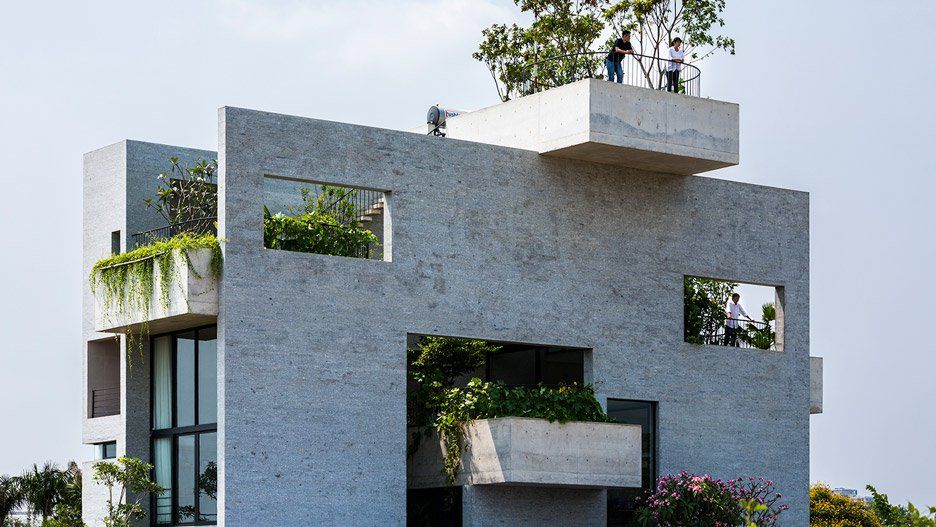









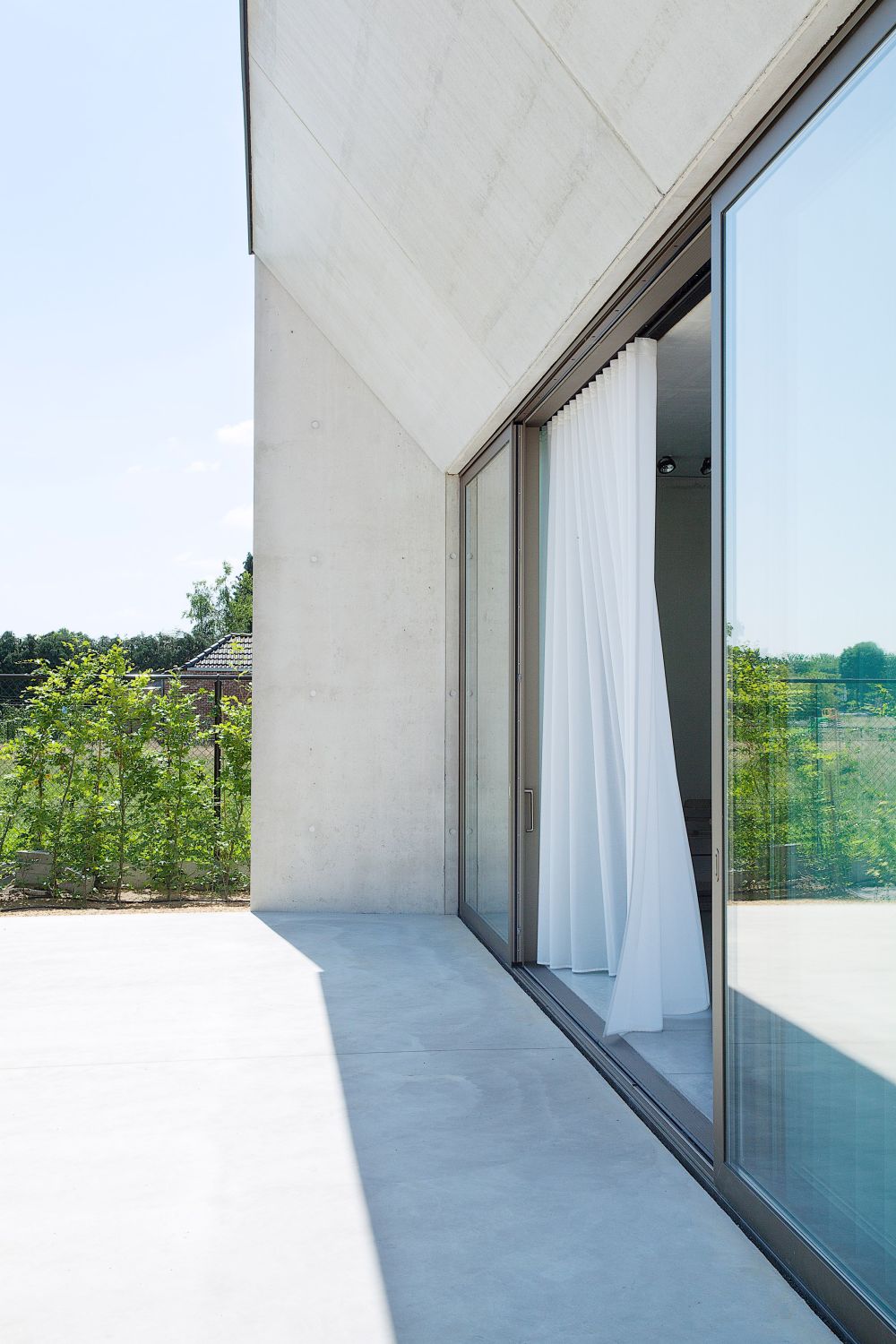








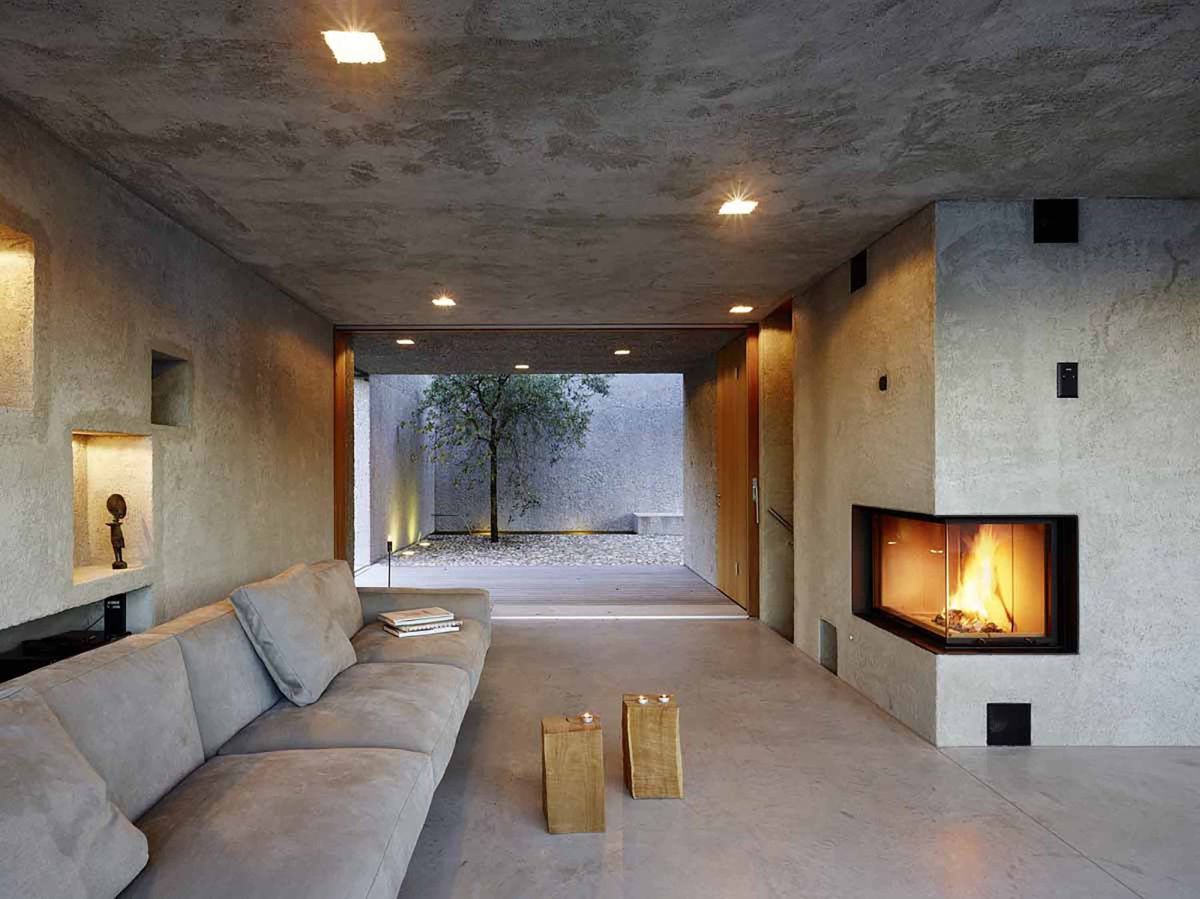

















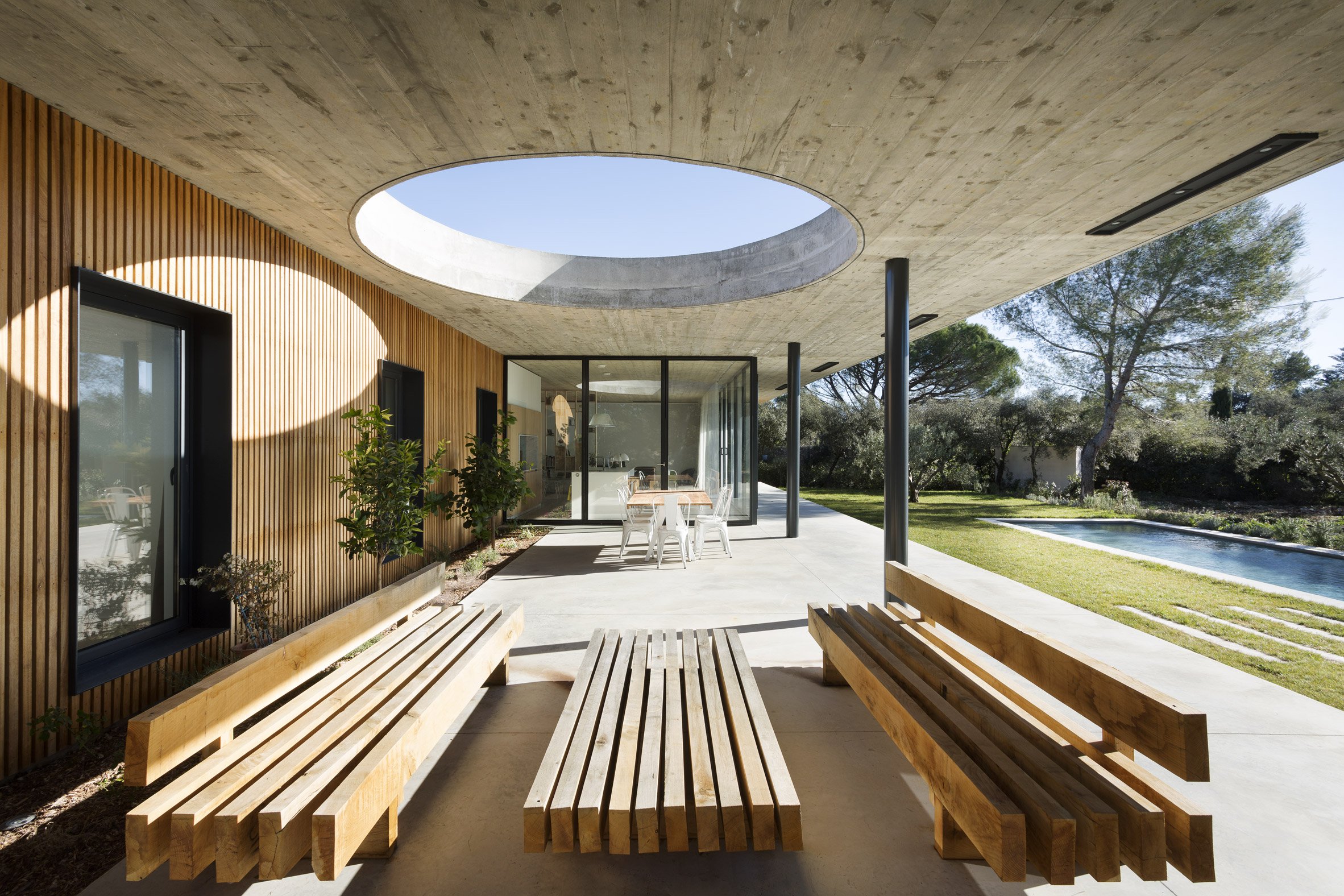











0 Commentaires